Getting decodable readers ready for my small group reading instruction each week definitely takes some time, but I have some tips that will speed things up just a bit for you! Read on to find out how I prepare and store my decodable readers.
Choosing the right book:
This is the part that takes me the longest (depending on the set of readers I am using). To begin, I select my decodable readers based on a few things:
- What skills do my students need practice with?
- What difficulty level of text are my students ready for?
- Will this book engage my students?
My school has a book room with some decodable texts that they have purchased. I do occasionally pull these books for small group instruction, but I often use copy-and-go decodable readers that I have created to match our Orton Gillingham phonics program. I also pull from the decodable books provided with our program and readinga-z.com as well.
Printing and Prep:
After I have selected a text that is a good fit for each of my small groups, based on data like running records (click here to find out more about how I perform and use running records in small group instruction). I print a master copy of each decodable book and head to the copy machine. Whenever possible, I print books front and back to save some paper. (I have lost count of how many boxes I have ordered this year! Yikes!)
I like to make six copies of each decodable book, this is because I do save the books once my students are finished with them for another group. I try to keep my groups at six or fewer kids, so by making six copies of the decodable readers, to begin with, I save myself some time later.
If I am using the decodable readers created by yours truly, printing and prep is a cinch! Each printed page makes two books. So that saves me some serious paper and copy time. These books are available in my tpt store if you would like to check them out! After the books are copied, it is time to staple and cut them in half if needed.
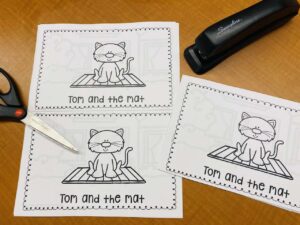
TIP: The decodable readers I use have a comprehension page at the end of the book. I do not staple this with the rest of the book. Instead, I keep it separate so students can complete it when we do our reading comprehension practice. Almost like a separate worksheet. By keeping it separate, I can save the decodable reader for future use with another group. I will only need to copy a new comprehension page then.
Once the books are made, I store them in a drawer with the other supplies for that group’s small group instruction for that week.
Just For Fun
Here’s a quick and easy way to increase engagement within your reading groups. Print one color copy of a decodable book. Just one! Choose a student who has shown great behavior or work ethic in the reading group to get to read the prized color copy of the decodable book that week. I do not like to choose students based on reading ability, I want it to be a factor that they are in control of. Some things I choose students based on are:
- Coming to the group quickly and/or prepared
- Following directions, for instance, not opening their book cover until I ask them to
- Participation
- Effort
Student Familiar Reading Folders
For small group instruction, we usually use a book for approximately four days at the beginning of the school year and then the book goes into students’ familiar reading folders. Familiar reading folders are used first thing in the morning when students come into class. Students grab their folders and read while I take roll and help my kindergarteners get settled. Putting these decodable readers in their familiar reading folders provides students with a text that I know is just right for them. Rereading helps them independently build fluency and confidence!
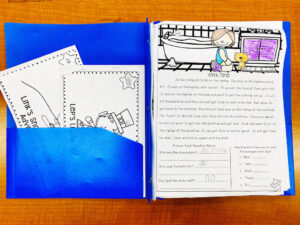
Storage
After a few weeks in familiar reading folders, I take the decodable readers out and store them in baskets until the next time I need that particular book. I sort and store them based on the phonics skill that they teach. I like to put them in the same order that the phonic skills are taught within our phonics program. Storing books allows me to just “grab and go” to prep for instruction rather than heading to the copy machine.
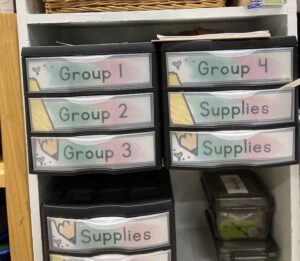
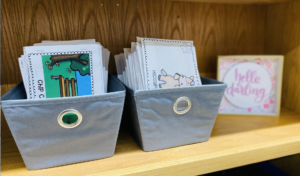
Let me know if you have any questions! I would love to help you and your students use decodable texts in your classroom!

Want to receive a FREE decodable book from me? Click the book to sign up for my newsletter below!
Don’t miss out on these freebies from my tpt store!
Decodable Text Mega Bundle in my TPT store
Free Level 1 Passages
Free Level 2 Passages
Free Level 1 Book
Here are some other options that I have used:
- Reading A-Z has a whole library of decodable text. Occasionally, I have difficulty matching it to my readers, but it was still a great resource. They offer a 15-day free trial that would definitely let you try their books out.
- Fly Leaf is offering ALL of their decodable texts for free at the time of this writing (11/23/2020). I like this company as well for students who have mastered consonants, short vowels, and some blends and phonics chunks.
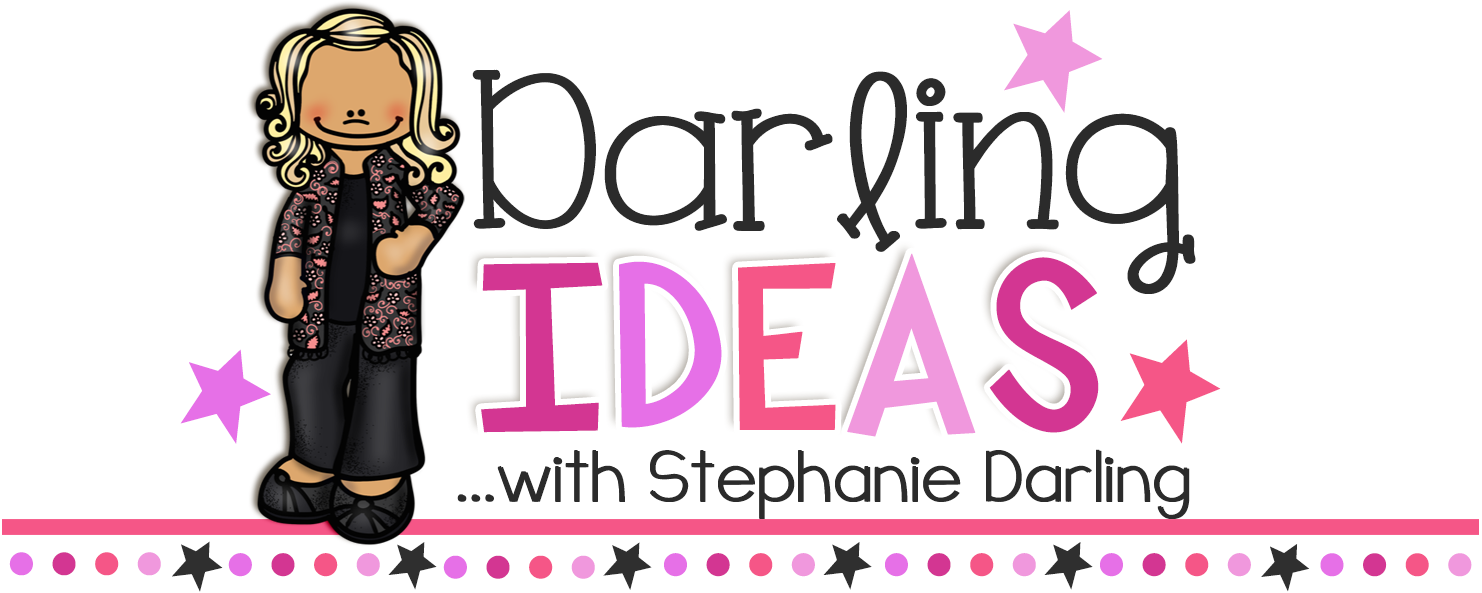
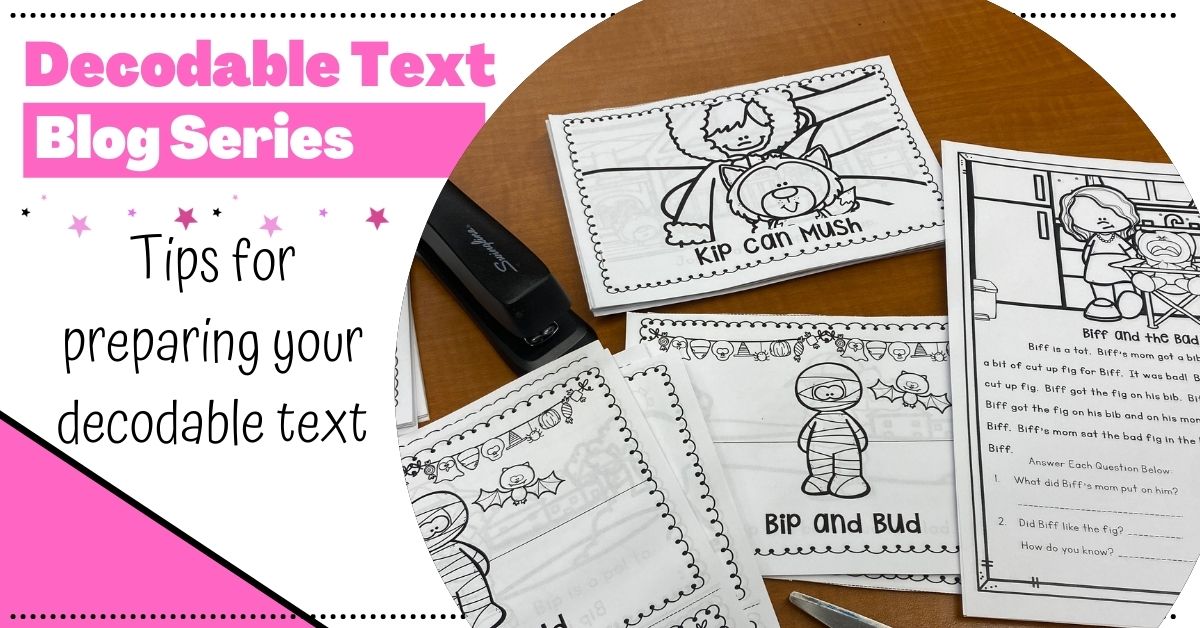


2 Comments
Beginning to make master sets of printable decodable readers and looking for ways to store them for easy access when needed. You mentioned by skill in baskets. Do you have a picture? Thank you.
Hi Priscella! Great questions! I added a picture above of the baskets that I use in my classroom. I got them at Walmart. 🙂